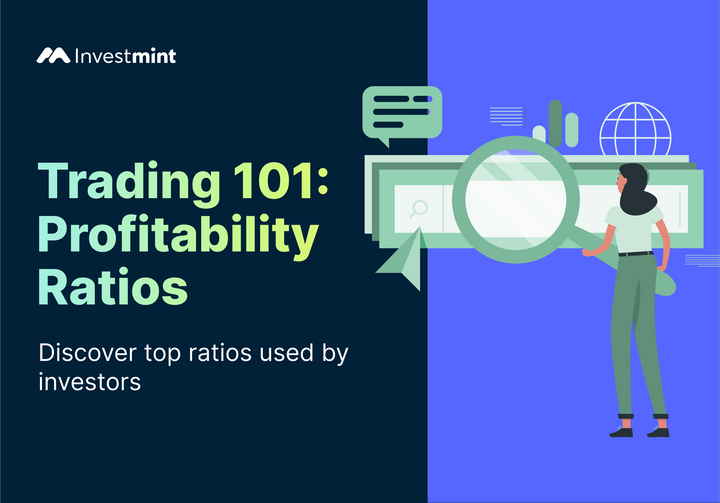Everything you need to know about short-term trading
Intraday trading, scalping or swing trading? All these are short-term trading. Know more about different assets and styles of short-term trading.

Discover Your Inner Trader
In this investing ecosystem, there are primarily two sets of people. On are full-time traders who trade the markets every day. The next set is people who invest and trade occasionally, based on their discretion or to hedge their portfolios.
You will most likely fall in the second category, so in this blog, you will learn all about short-term trading, different markets & instruments that you can trade in the short term, some styles and more. Stay till the end if you want to become a successful short-term trader.
What Is Short Term Trading?
Short-term trading involves buying and selling financial assets within a brief time frame, often days or weeks. Traders aim to profit from price fluctuations rather than long-term value.
For instance, if a stock's price rises in the morning, a short-term trader might buy it and then sell it when the price peaks later that day. This strategy capitalises on short-lived market movements, requiring swift decision-making and active monitoring.
Short-term trading is like catching waves at the beach. Just as surfers ride the waves for a brief thrill, short-term traders quickly buy and sell stocks or other assets to ride price movements.
Types Of Short-Term Traders
Short-term trading can be categorised on the basis of time frames of trading, ranging from High-Frequency Trading (HFT) to Swing Trading. They can be categorised as below.
- Scalping:
Scalpers are short-term traders who trade quickly within the interval of minutes and sometimes even seconds. This style bets on the assets' short volatility and is often seen in practice for volatile assets like the Forex.
To succeed in scalping, traders require ultra-fast internet connectivity, advanced charting software, direct access brokers, a deep understanding of market movements and the energy to place multiple trades within the day.
2. Day Trading:
Day traders are traders who open and close their position within the day. A day trader generally focuses on short-term price movements and tries to capitalise on intraday volatility. This style of trading is also known as intraday trading.
Day trading requires similar tools to scalpers, including advanced charting software and fast internet connectivity, considering the decisions are needed to be taken within the day.
However, they may also use more traditional fundamental and technical analysis tools to make their trading decisions, which scalpers aren't able to use due to the high frequency of trades. However, you are also more susceptible to trend reversal due to changes in market conditions during off-trading hours.
3. Swing Trading:
Swing traders hold their positions for several days to weeks and try to take advantage of medium-term price trends. Unlike scalpers and day traders, swing traders do not need to make quick decisions so they can rely on more traditional technical analysis tools like chart patterns and indicators.
Swing trading requires access to real-time market data, news feeds, and charting software that allows them to analyse trends over a longer time frame.
As a swing trader, you should look for opportunities to enter and exit trades based on technical analysis and strategies like Reversal Trades, Breakout Trades, and Momentum Trades, which are explained further below.
Instruments For Short-term Trading
When it comes to short-term trading, choosing the right instrument/market that suits your goals and your trading style is important. Some of them are:
1. Stocks: Stocks are a popular market for short-term traders because they are highly liquid and offer plenty of opportunities for price movements. Traders can look for short-term trends in individual stocks or sectors and make trades accordingly.
It is important to note that stock prices can be affected by various factors, including company news, economic data, and market trends. Short-term traders must stay informed and up-to-date with market news and trends to make informed trading decisions.
2. Options: Options trading involves buying or selling the right to buy or sell a security at a specific price within a specific timeframe. Options can be a high-risk, high-reward strategy as they offer the potential for large profits but also come with the risk of significant losses.
These are highly leveraged instruments, and short-term traders may use options to profit from a particular stock or index price movements.
3. Forex: Forex, or foreign exchange, is the market for trading currencies. Forex traders seek short-term opportunities to profit from price movements in different currency pairs.
The forex market is highly liquid and is open 24 hours a day, making it accessible to traders around the clock. However, forex trading requires a deep understanding of currency pairs, market trends, and technical analysis.
4. Futures: Futures are contracts that allow traders to buy or sell an underlying asset at a specific price at a specific date in the future. Futures trading can be complex and requires a deep understanding of the markets and the ability to analyse market trends and make informed trading decisions.
Futures can be used to trade various assets, including commodities, currencies, and stock indexes.
Short-term Trading Styles:
As a blueprint for your profitable journey of short-term trading, you can follow some of the trading styles which are mentioned below.
- Quantitative style: In quantitative trading, you would opt for a data-driven approach where a detailed study of the market's historical statistics needs to be carried out to derive mathematical models to make decisions. The data churned to make these models will include data from the market, economy, financials, supply chain trends (if any), etc.
- Technical style: The technical way is quite different from the above-mentioned quantitative style. Here, you would conduct in-depth research of the existing chart patterns of the interested stocks. Besides the common Moving Average analysis, you can opt to understand Head and Shoulders, Triangles, Double Tops, and Double Bottoms to conduct technical analysis and base your inference upon it successfully.
Things to Keep in Mind Before Starting Short-term Trading
1. Understanding Your Asset: Ensure you understand the instrument/asset that you are trading and the risks involved. Do your research and analyse the market trends and news.
2. Knowing When to Quit: Don't let your emotions cloud your judgment. Set a clear stop-loss limit to minimise your losses, and be prepared to exit a trade if it is not going as planned.
3. Building a Diverse Portfolio: Never put all your funds in one basket. Diverse your portfolio based on the industries of those stocks. Thus they will safeguard you in the event of a sudden change of trend in the industry.
Bottom Line:
Short-term trading can be a lucrative investment strategy for experienced traders willing to take risks and make quick decisions based on market trends.
However, it is important to educate yourself about the markets and the risks involved and to develop a solid trading strategy that fits your goals and risk tolerance. Following these steps and remembering these tips can increase your chances of success in short-term trading.
FAQs
Q. Which trading is best for the short term?
Ans- There is no one-size-fits-all answer to this question, as different traders have different preferences and styles. Forex trading is 24/5. Hence highly volatile compared to stocks, options, and futures. Since the idea is to profit from short-term volatility, many consider Forex Trading the holy grail for short-term trading.
Q. What is short-term trade with an example?
Ans- The market performs in cycles that are often repeated. So you can analyze stock moving averages for 15,20,30,50,100, and 200 days. If the majority of this analysis indicates an upward trend, Buy the stock, and it's declining, consider shorting the stock to the profit of it. You can gauge the exit price based on historical data and previous technical analysis.
Q. How to make money in short-term trading?
Ans- Conduct a thorough technical analysis and enter a position based on a fixed strategy with a fixed open and close position. Try not to think emotionally and change these two positions, as it might lead to failure and, thus, loss. Always stick to the analysis and maintain a healthy stop-loss of up to 10%.
Want to read more such interesting articles? Click on the subscribe button below and get the next release, straight in your mail, for free!



